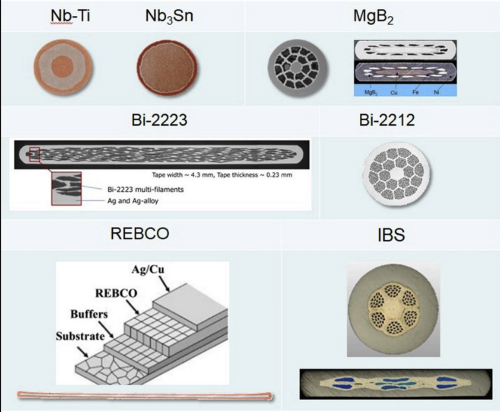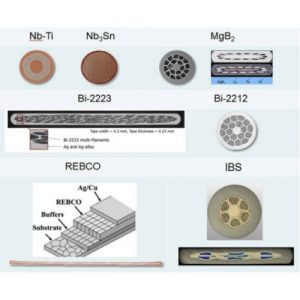Niobium's Role in Superconducting Materials

Introduction
Niobium possesses exceptional properties and multiple applications. This elemental stands out among transition metals. Particularly, it can withstand extreme temperatures, exceeding 2,400 degrees Celsius. Therefore, it can endure the most challenging conditions.

Superconducting Materials [1]
Niobium's uses extend across diverse industries. It works well in alloying with other metals, especially in the creation of superconducting materials. This article is going to discuss niobium's pivotal role in the making of superconducting materials. Hope that you can have a better understanding.
What Is Niobium?
Niobium is a transition metal element. It comes with the atomic number 41. It holds a prime position among the periodic table's elements.
- Appearance: Nb is notable for its distinct physical properties. It is characterized by its silvery-gray appearance and great resistance to corrosion.
- High Melting Point: Also, it stands out for its high melting point, surpassing 2,400 degrees Celsius. It is a critical element in applications requiring materials to withstand extreme temperatures.
Related reading: Niobium – A Material For Innovations With Great Future Potential
This refractory metal finds widespread utilization across various industries.
- Its primary use is alloying with other metals, particularly in producing superconducting materials.
- Nb also finds applications in high-performance machinery, aerospace engineering, and even in the medical field.
It is crucial across diverse sectors.
Related reading: 10 Important Uses Of Niobium
This transition metal stands at the forefront of innovation in superconducting materials. Superconductivity finds a direct link with the exceptional characteristics inherent in niobium.
What Are Superconducting Materials?
Superconducting materials are substances that exhibit zero electrical resistance and expel magnetic fields when cooled below a critical temperature. They conduct electricity without any loss of energy. They are crucial for various technological applications. Such uses include advanced medical imaging devices, highly efficient power grids, and magnetic levitation trains.
Superconducting materials have two notable categories:
- Type I Superconductors: Type I includes lead and mercury. They exhibit superconductivity at low temperatures and in a narrow range. They expel magnetic fields effectively, but they are limited by a lower critical magnetic field. Such materials tend to abruptly lose their superconducting properties in applied magnetic fields.
- Type II Superconductors: Type II involves niobium-based alloys. These alloys maintain superconductivity over a broader range of temperatures and magnetic fields. They can carry higher critical current densities and magnetic fields. They are suitable for high-field magnets, advanced superconducting wires, and various practical fields.
1. Niobium's Superconducting Qualities
Let’s continue to explore how niobium became a prime choice in diverse applications at ultra-low temperatures.
At cryogenic temperatures, Nb shows remarkable superconducting behavior, thanks to its high critical temperature (Tc) among elemental superconductors. Niobium's critical temperature is generally around 9.25 Kelvin (-263°C). That exceeds that of many superconducting materials.
2. Niobium Superconducting Products
Niobium plays a pivotal role in the superconducting materials industry. Here are some primary uses of niobium in this sector:
--Superconducting Magnets:
Niobium is a critical component in the production of superconducting magnets. These devices find applications notably in MRI machines, particle accelerators, and magnetic resonance spectroscopy devices.
These magnets require superconducting wires made from niobium-based alloys because niobium can conduct electricity with zero resistance when cooled to low temperatures.
--Particle Accelerators:
Niobium-titanium (NbTi) and niobium-tin (Nb3Sn) alloys find uses in the production of superconducting radiofrequency (SRF) cavities in particle accelerators like synchrotrons and linear accelerators.
These cavities, when cooled to extremely low temperatures, allow for the efficient acceleration of charged particles.
--Energy Transmission:
Niobium-titanium wires are also useful in the construction of superconducting cables for power transmission and distribution.
These cables, when cooled to superconducting temperatures, can carry electricity without significant losses. In this way, they improve energy efficiency over conventional copper wires.
--Nuclear Magnetic Resonance (NMR):
Niobium-titanium alloys are employed in NMR spectroscopy instruments for scientific research and medical diagnostics.
These instruments use superconducting magnets made from niobium alloys to generate strong and stable magnetic fields necessary for analyzing molecular structures.
--Quantum Computing:
In emerging technologies like quantum computing, niobium plays a role in the creation of superconducting qubits.
These qubits are based on the superconducting properties of niobium circuits, and they hold the potential for developing powerful and scalable quantum computers.
Niobium's Application in Large-Scale Projects:
The uses of niobium in large-scale projects have changed various industries.
For instance, the Large Hadron Collider (LHC) is the world's most powerful particle accelerator. It employs niobium-titanium superconducting magnets to guide high-energy particle beams.
The high critical magnetic fields and stability of niobium-based superconductors contribute greatly to the success of such groundbreaking scientific experiments.
Future Prospects and Ongoing Research:
Continuous advancements in material sciences and superconductor technology drive ongoing research into niobium-based superconductors.
Efforts aim to elevate the critical temperature and critical magnetic field of niobium alloys, potentially expanding their applications across more diverse fields.
Conclusion
In a word, niobium plays a pivotal role in superconducting materials. These properties and uses make Nb a cornerstone in cutting-edge technologies.
As research and development continue to push boundaries, the future promises expanded applications and further advancements. And, niobium serves as a legacy for transformative technological breakthroughs.
Advanced Refractory Metals (ARM) stands as a leading provider of high-quality niobium products. With a commitment to innovation, ARM continues to offer refractory metals and niobium products for various technological domains. Please check our homepage for more information about materials with high melting points.
Reference:
[1] Chao Yao, Yanwei Ma, Superconducting materials: Challenges and opportunities for large-scale applications, iScience, Volume 24, Issue 6, 2021, https://www.sciencedirect.com/science/article/pii/S2589004221005095
{{item.content}}
LEVE A REPLY
{{item.children[0].content}}
{{item.content}}






